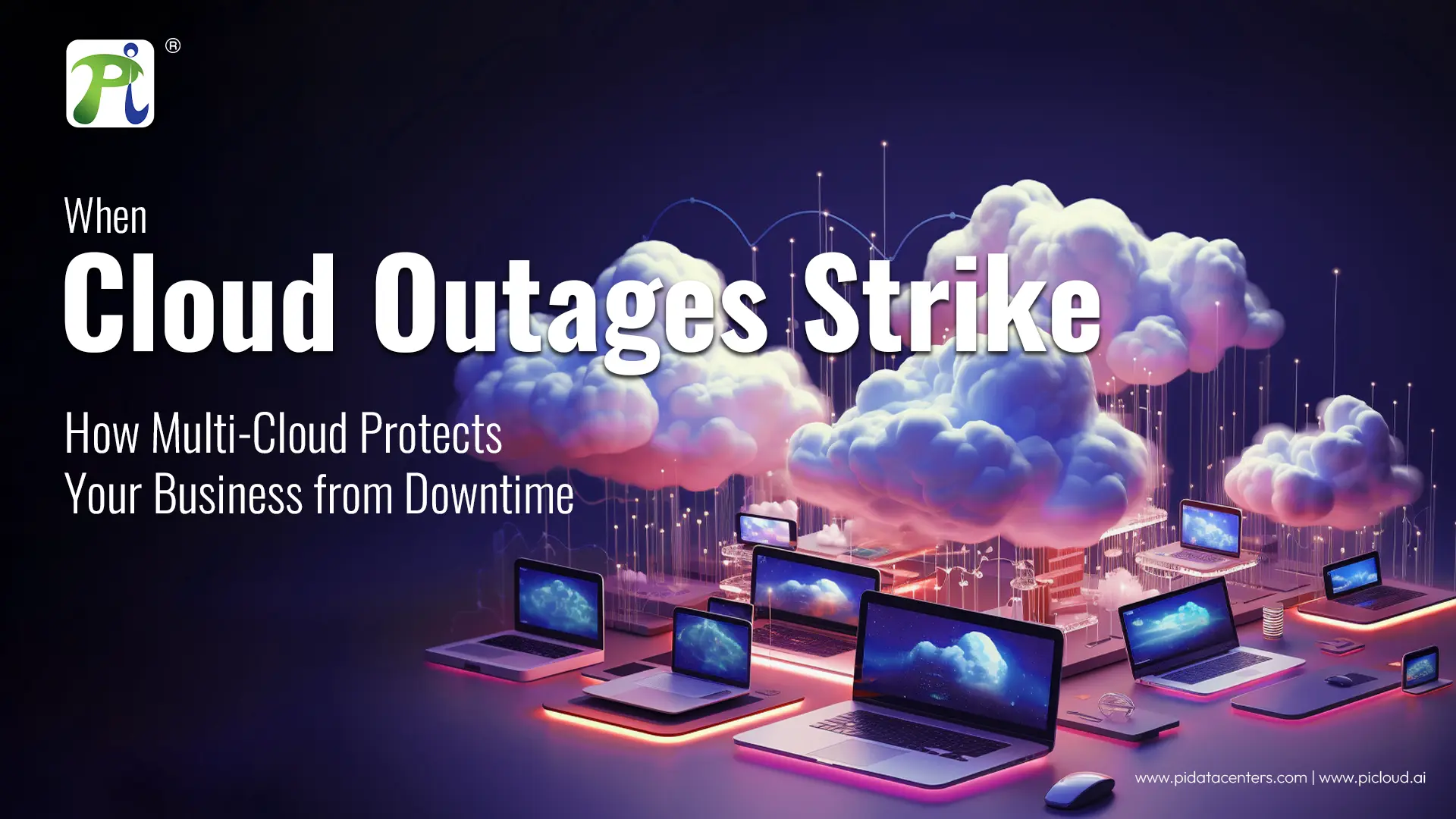
When Cloud Outages Strike: How Multi-Cloud Protects Your Business from Downtime
On October 20, 2025, a major Amazon Web Services (AWS) outage caused widespread disruptions across the internet, impacting a range of applications, websites, and enterprise tools. From gaming platforms and social networks to business-critical systems, the effects were felt globally.
The outage brought down major platforms such as Snapchat, Coinbase, and Fortnite, hitting key industries including social media, fintech, and gaming. This incident underscored how deeply today's digital economy depends on a single cloud provider, highlighting the urgent need for multi-cloud resilience and disaster recovery strategies to ensure business continuity.
This incident serves as a stark reminder that if your business solely depends on a single cloud provider, it could leave you vulnerable when issues arise. Let's break down why that matters and how adopting a multi-cloud approach can help you maintain uptime, protect revenue, and safeguard your reputation.
What happened, and why does it matter?
The outage in AWS's US-EAST-1 region due to DNS resolution errors triggered by an internal update. Many businesses and services found that when one core service failed, it created cascading failures across applications.
The root cause appears to have been an error in the update that affected the Domain Name System (DNS), which helps apps find the correct server addresses. A DNS works like the internet's phone book, turning website names into the numeric IP addresses that computers use to connect to servers. Because of the DNS issue, apps could not find the IP address for DynamoDB's API and were unable to connect. As DynamoDB went down, other AWS services also began to fail. In total, 113 services were affected by the outage. By 10:11 GMT, Amazon said that all AWS services had returned to normal operations, but there was a backlog of messages that they would finish processing over the next few hours.
The result is downtime, delayed transactions, frustrated end-users, and lost trust, all because a single region or provider experienced an issue.
The risk of single-cloud dependency
- Single point of failure: When all your infrastructure lives with one provider or region, any issue there hits you hard.
- Operational risk: You may rely on a provider's region, network, or services; when they fail, you have limited immediate alternatives.
- Business impact: Revenue loss, brand damage, customer churn; downtime isn't just a technical inconvenience.
- Regulatory/recovery risk: Many organizations underestimate failover strategies or exit plans from one vendor. Experts describe this as "dangerously powerful yet routinely overlooked systemic risk."

What multi-cloud gives you (The Advantages)?
A "multi-cloud" strategy involves using multiple cloud providers simultaneously, which allows you to spread your risk and gain several benefits.
- Resilience: if one provider or region fails, your workloads can shift to another provider or region, helping maintain availability.
- Flexibility and optimization: You can pick the best service or region for each workload. For instance, one provider might offer better performance for analytics, and another might have better pricing for storage.
- Avoiding vendor lock-in: you aren't stuck with one provider's ecosystem, which gives your business more bargaining power and futureproofing.
In short, multi-cloud architecture ensures that your cloud infrastructure is not overly reliant on a single provider, promoting diversity and preparedness.
Practical steps to adopt multi-cloud
- Catalog your essential workloads. Determine the applications or data that are critical to remain operational and cannot tolerate any interruptions.
- Designate primary and secondary cloud environments. Select a single provider for your primary operations and an alternative for failover or secondary workloads to ensure coverage in the event of an issue with the primary provider.
- Ensure the design accommodates portability. Utilize technologies and architectures, such as containers and standard APIs, that facilitate the seamless movement or replication of workloads across different cloud environments. This prevents stagnation when a transition or expansion is necessary.
- Regularly test your failover procedures. Ensure that your backup cloud or region is functional when required. Conduct failover drills and confirm that you can swiftly restore operations in an alternative cloud.
- Oversee expenses, regulatory compliance, and safety measures. Multi-cloud introduces complexity; it is essential to have clear visibility into the locations of workloads, the behavior of costs, and the enforcement of security and policies across different providers.